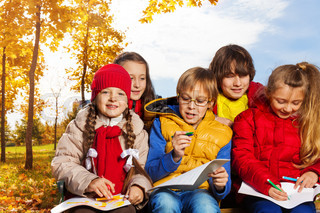Education outside the classroom (EOtC) can be defined as a compulsory educational activity that takes place outside of school buildings on a regular basis1 and activities that take place in both natural and cultural settings, e.g. forests, parks, local communities, factories and farms2.
These activities are characterised by teachers making use of the local environment when teaching specific subjects and curriculum areas by, for example, measuring and calculating the volume of trees in mathematics, writing poems in and about nature for language-related tasks or visiting historically significant places or buildings in history education.
Jordet (1998)3 focused on the importance of a more ‘holistic’ and progressive education highlighting communication, social interaction, spontaneity, play, curiosity and fantasy and focusing on a student’s opportunity to learn by using their body and senses and being active in learning activities.

1. Bentsen, P., Mygind, E., & Randrup, T.B. (2009). Towards an understanding of udeskole: education outside the classroom in a Danish context. Education 3-13, 37(1), 29-44.
2. Jordet, A. N. 2007. Nærmiljøet som klasserom. En undersøkelse om uteskolens didaktikk i et danningsteoretisk og erfaringspedagogisk perspektiv, (Doctoral Dissertation No. 80). University of Oslo. [The local environment as classroom]
3. Jordet, A. N. 1998. Nærmiljøet som klasserom. Uteskole i teori og praksis, Oslo: Cappelen Akademisk Forlag. [The nearby environment as classroom]
